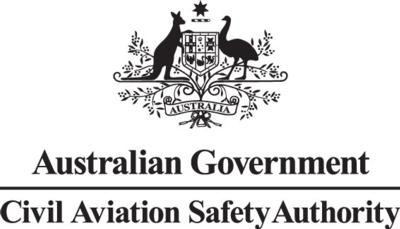Fri, Apr 04, 2014
New Rules Could Save $2 Million (AU) Across The Industry
New regulations covering a large number of flying training organizations in Australia are being simplified, according to that country's Civil Aviation Safety Authority (CASA). The agency says the move follows a review of its Part 141 of the Civil Aviation Safety Regulations.

The simplification of the rules and requirements will cut red tape and reduce costs for about 300 flying training schools across Australia. CASA estimates the changes will lower costs in the flying training industry by nearly $2 million (AU) a year. Optimal safety outcomes for flying training will be maintained by retaining the core elements of the new Part 141.
Part 141 covers flying training for recreational, private and commercial pilot licenses, ratings and endorsements for single pilot aircraft. It does not extend to intensive integrated training for private and commercial licenses, which is contained in Part 142 of the Civil Aviation Safety Regulations. The new licensing suite of regulations, which includes Part 141, will take effect from 1 September 2014. Simplification of the requirements will be made before the regulations come into effect.
Key changes to Part 141 are:
- The requirement for a safety management system will be removed. Recommending safety management systems are implemented for small, simple flying training organizations is more beneficial than mandating them.
- A quality assurance manager will no longer be required and the quality assurance system requirements will be simplified for operators who are limited to simulator training.
- There will no longer be a need to develop an exposition when transitioning to the new rules. An operations manual will achieve the same safety outcomes.
- To help reduce the administrative burden on flying schools, CASA will provide training course material and off-the-shelf operations manual material.
- A policy statement will be developed in relation to entry control processes to ensure they do not go beyond what is legislatively required.
CASA’s Director of Aviation Safety, John McCormick, said the review of flying training regulations was conducted in line with the Federal Government’s direction to look for opportunities to reduce the cost and burden of regulatory compliance on industry.
“I am very pleased the new regulations in Part 141 can be simplified and made less costly while at the same time maintaining high safety outcomes,” McCormick said. “Naturally, safety can never be jeopardized in the pursuit of simpler regulations but with hard work the two outcomes can be achieved. CASA has listened to the views of people in the flying training sector and responded to their concerns with positive action.”
More News
Also: New Lakeland Fly-in!, Gleim's DPE, MOSAIC! Nearly three-quarters of a century in the making, EAA is excited about the future… especially with the potential of a MOSAIC>[...]
Estimated (EST) -When used in NOTAMs “EST” is a contraction that is used by the issuing authority only when the condition is expected to return to service prior to the >[...]
Aero Linx: Regional Airline Association (RAA) Regional airlines provide critical links connecting communities throughout North America to the national and international air transpo>[...]
The Airplane Broke Up In Flight And Descended To The Ground. The Debris Path Extended For About 1,435 Ft. Analysis: The pilot, who was the owner and builder of the experimental, am>[...]
From 2015 (YouTube version): History Comes Alive Thanks to A Magnificent CAF Effort The story of the Douglas C-47 named, “That’s all Brother,” is fascinating from>[...]
 Airborne 07.21.25: Nighthawk!, Hartzell Expands, Deltahawk 350HP!
Airborne 07.21.25: Nighthawk!, Hartzell Expands, Deltahawk 350HP! ANN's Daily Aero-Term (07.27.25): Estimated (EST)
ANN's Daily Aero-Term (07.27.25): Estimated (EST) ANN's Daily Aero-Linx (07.27.25)
ANN's Daily Aero-Linx (07.27.25) NTSB Final Report: Luce Buttercup
NTSB Final Report: Luce Buttercup Classic Aero-TV: 'That's All Brother'-Restoring a True Piece of Military History
Classic Aero-TV: 'That's All Brother'-Restoring a True Piece of Military History



